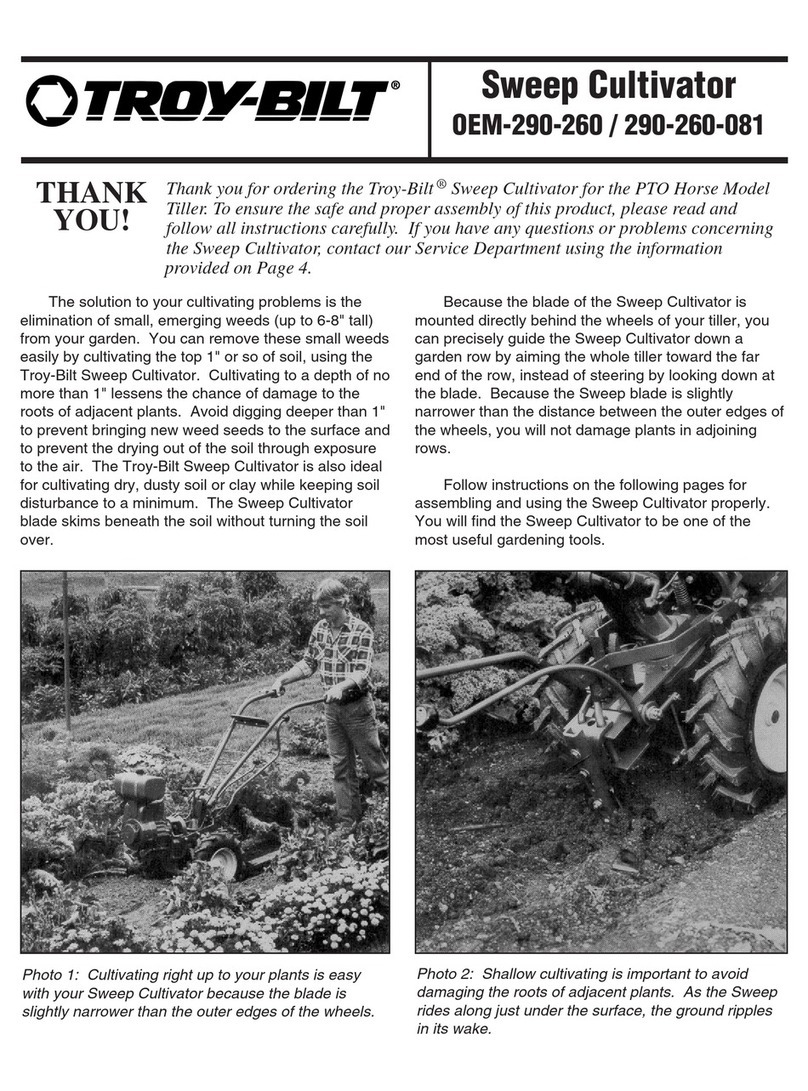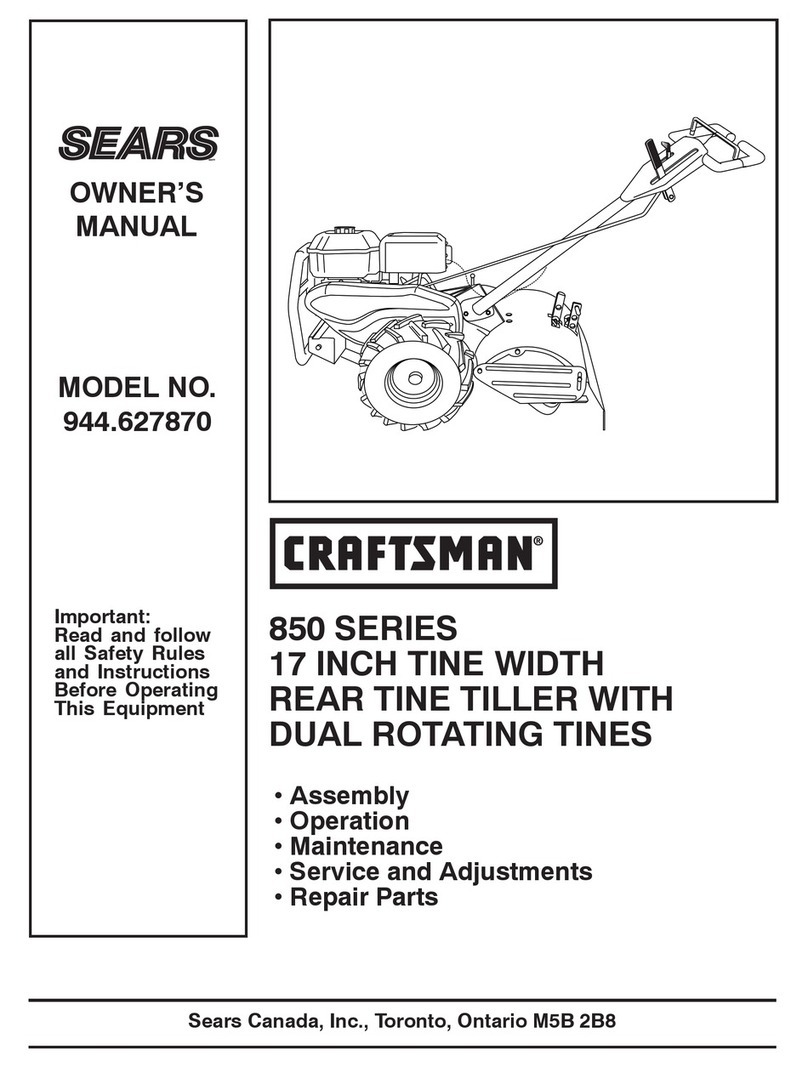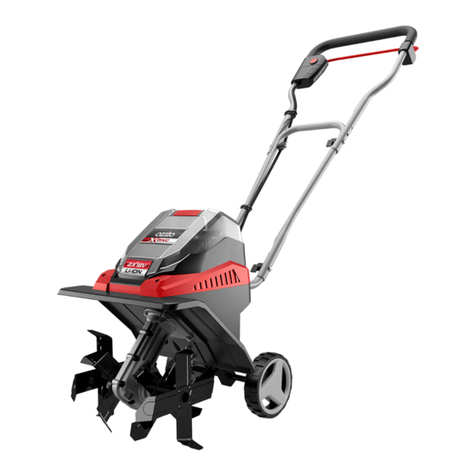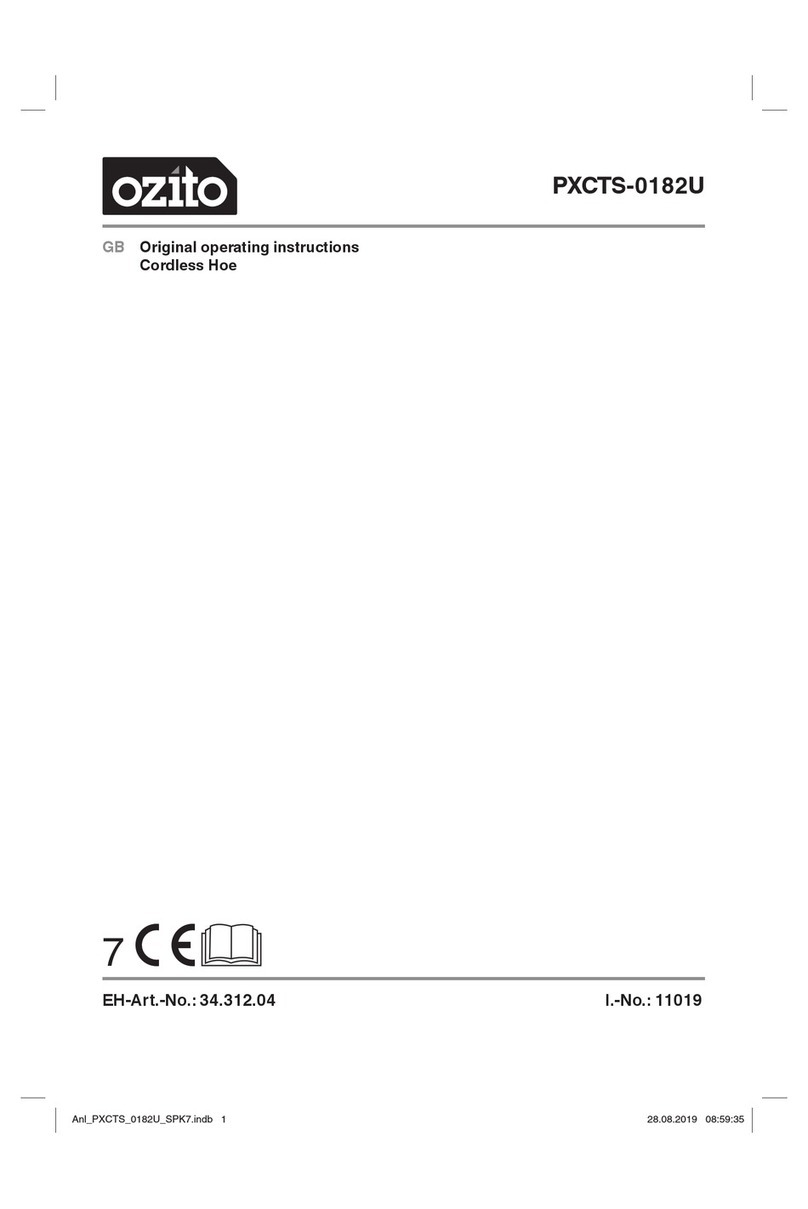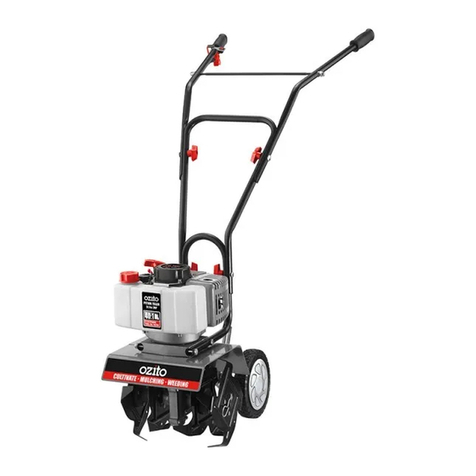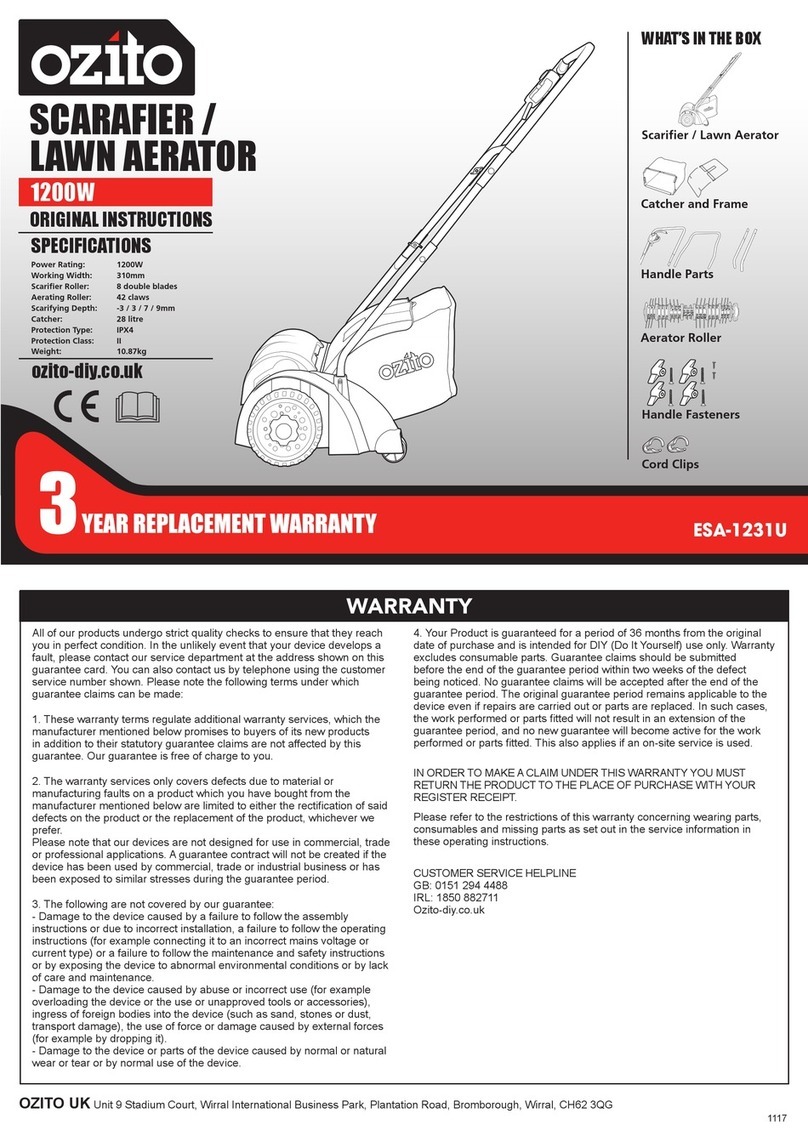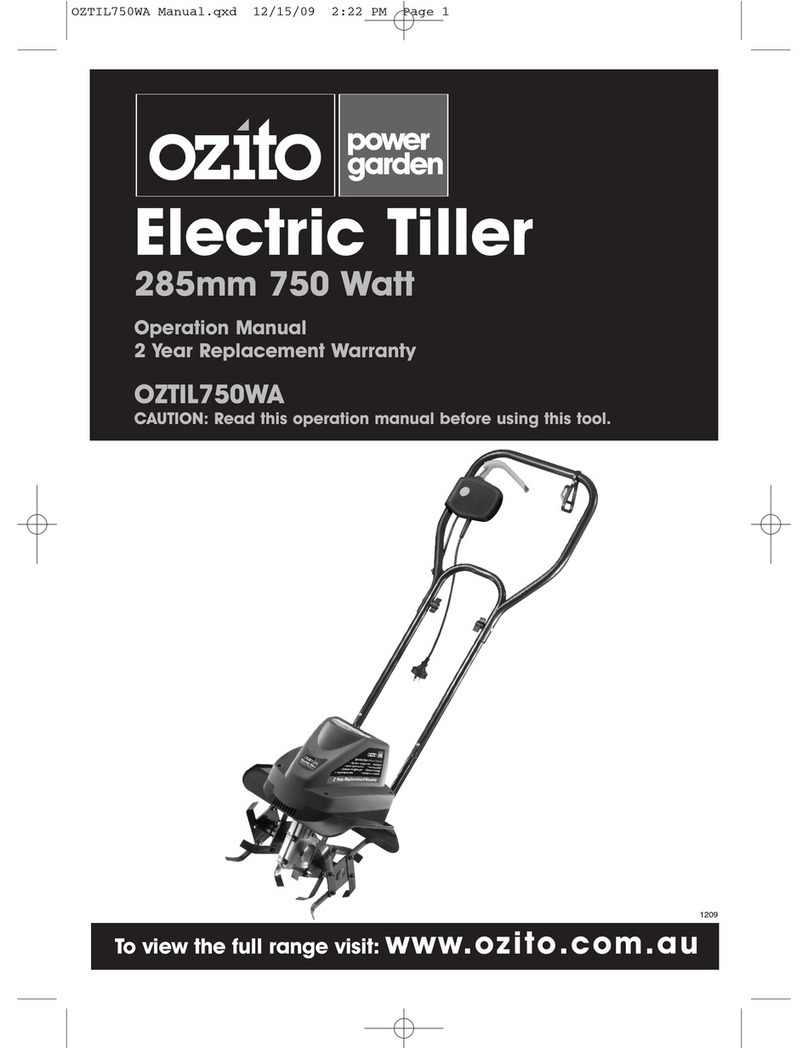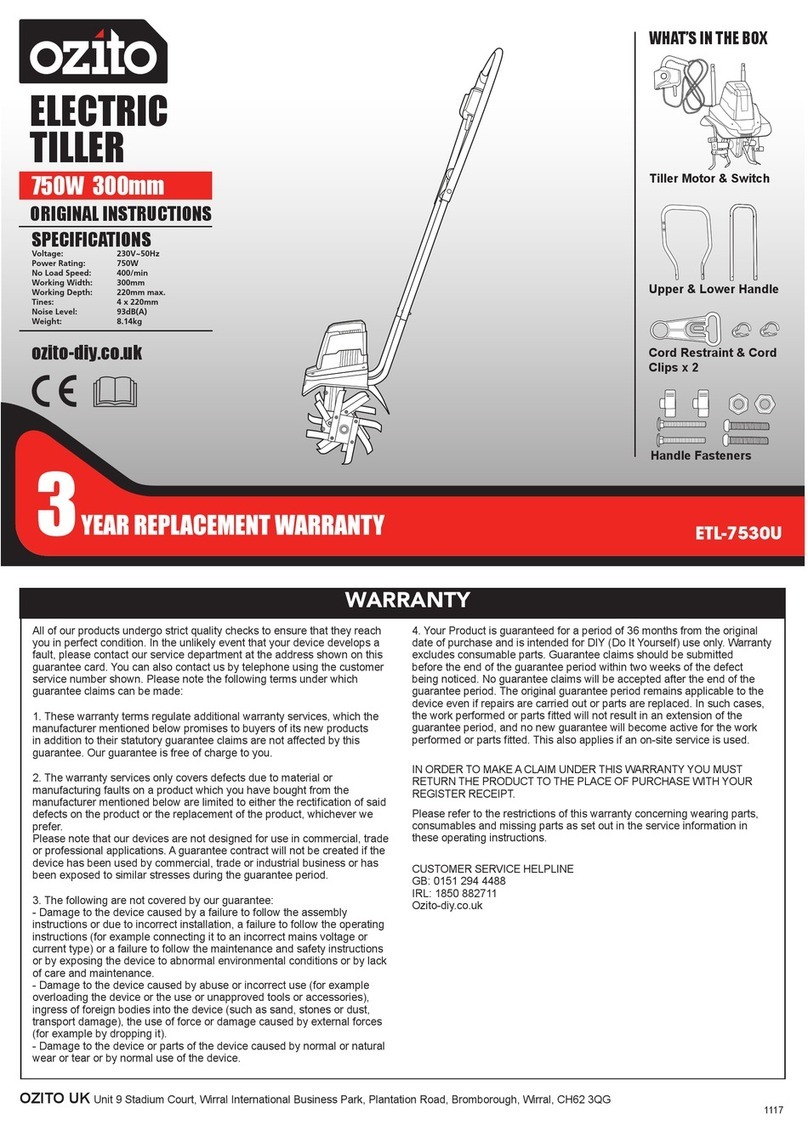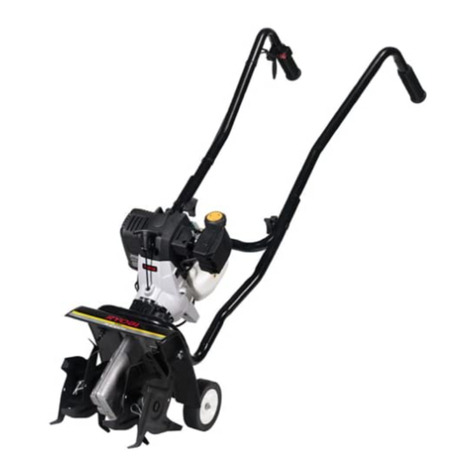
GB
- 9 -
h) For your own safety, replace worn or dama-
ged parts without delay. Use only original
spare parts and original accessories.
i) If the equipment is stopped for maintenance,
inspection or storage purposes or in order
to replace an accessory, you must switch off
the drive, pull the safety plug from the equip-
ment and make sure that all moving parts
have come to a complete standstill. Allow the
equipment to cool before carrying out any
inspections, adjustments, etc.Treat the equip-
ment with care and keep it clean.
j) Keep the equipment where it is out of
children’s reach.
Service
Have your power tool repaired only by trained
personnel using only genuine spare parts.
This will ensure that your power tool remains safe
to use.
CAREFUL HANDLING AND USE OF CORD-
LESS EQUIPMENT
• Ensure that the equipment is switched off
before you insert the battery. Inserting a
battery into an electric tool that is switched on
can cause accidents.
• Only charge the batteries in chargers that
are recommended by the manufacturer. A
charger that is designed for a certain type of
batteries may pose a fire risk if it is used with
other types of batteries.
• Use only the correct batteries in the elec-
tric tools.The use of other batteries may
result in injuries and a fire risk.
• Keep unused batteries away from paper
clips, coins, keys, nails, screws and other
metallic objects that could cause a short
circuit between the contacts. A short cir-
cuit between the battery contacts may cause
burns or a fire.
• In case of incorrect use, fluid may escape
from the battery. Avoid contact with it. If
you touch it by mistake, rinse the affected
area with water. If you get the fluid in your
eyes, also seek medical advice. Leaking
battery fluid can cause skin irritation or burns.
Additional safety instructions
We pay a great deal of attention to the design of
every battery pack to ensure that we supply you
with batteries which feature maximum power den-
sity, durability and safety. The battery cells have
a wide range of safety devices. Each individual
cell is initially formatted and its electrical charac-
teristic curves are recorded.These data are then
used exclusively to be able to assemble the best
possible battery packs. Despite all the safety
precautions, caution must always be exer-
cised when handling batteries. The following
points must be obeyed at all times to ensure
safe use.
Safe use can only be guaranteed if undama-
ged cells are used. Incorrect handling can
cause cell damage.
Important: Analyses confirm that incorrect use
and poor care are the main causes of the damage
caused by high performance batteries.
Information about the battery
1. The battery pack supplied with your cordless
tool is not charged.The battery pack has to
be charged before you use the tool for the first
time.
2. For optimum battery performance avoid low
discharge cycles. Charge the battery pack
frequently.
3. Store the battery pack in a cool place, ideally
at 15°C and charged to at least 40%.
4. Lithium-ion batteries are subject to a natural
ageing process.The battery pack must be
replaced at the latest when its capacity falls to
just 80% of its capacity when new. Weakened
cells in an aged battery pack are no longer
capable of meeting the high power require-
ments and therefore pose a safety risk.
5. Do not throw battery packs into an open fire.
There is a risk of explosion!
6. Do not ignite the battery pack or expose it to
fire.
7. Do not exhaustively discharge batteries.
Exhaustive discharge will damage the battery
cells.The most common cause of exhaustive
discharge is lengthy storage or non-use of
partly discharged batteries. Stop working as
soon as the performance of the battery falls
noticeably or the electronic protection system
triggers. Place the battery pack in storage
only after it has been fully charged.
8. Protect batteries and the tool from over-
loads. Overloads will quickly result in over-
heating and cell damage inside the battery
housing without this overheating actually
being apparent externally.
9. Avoid damage and shocks. Replace batte-
ries which have been dropped from a height
of more than one meter or which have been
exposed to violent shocks without delay, even
if the housing of the battery pack appears to
Anl_PXCLSS_0182U_SPK7.indb 9Anl_PXCLSS_0182U_SPK7.indb 9 26.08.2019 09:51:4826.08.2019 09:51:48



